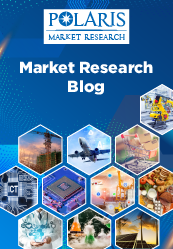Infantile Spasm Therapeutics Market: A Therapy to Cure Age-Specific Seizures
Infantile spasms depict age-specific epileptic disarray of infancy and early childhood. Children having infantile spasms usually display epileptic spasms together with electroencephalographic (EEG) patterns recalled as hypsarhythmia. In the infantile spasm therapeutics market, the therapy should be commenced imperatively once the diagnosis is made. The significance of urgent treatment results in linkage with premature acceptance and implementation of therapy.
What are the Treatments for Infantile Spasms?
- ACTH (Adrenocorticotropic Hormone): ACTH is a hormone that the body produces. ACTH revives a section of the brain to emancipate other hormones. In this case, the ACTH is injected into a muscle with an IV needle. Average proof shows interim usage of ACTH, which may assist cure infantile spasms. Though this treatment has some side effects such as high blood pressure, the variance of specific chemicals in the body, infection, especially at the injection site, mood annoyance, and so on.
- Vigabatrin: This is an antiseizure drug that is utilized to cure infantile spasms. Frail proof displays interim usage of VGB may assist cure infantile spasms. There is frail evidence that interim cure with VGB may assist cure infantile spasms in children with tuberous sclerosis complex (TSC). TSC is a generic illness that causes seizures. Similar to ACTH, VGB cure fetches some risks, such as narrowing the world of vision.
The Market Insight
The global infantile spasm therapeutics market size was valued at US$ 133.04 Million in 2022 and is expected to grow at USD 181.85 million with a CAGR of 3.2% during the forecast period 2032.
Features of Infantile Spasms
- Spasm timing: Each spasm continues for about 1 second. It frequently resembles the child being concisely agitated. The spasm normally replicates in a cluster. So a single spasm will take place every 5 to 15 seconds, covering an aggregate span of numerous minutes.
- Spasms movements: The movement in the course of a spasm usually involve a swift wide-eyed stare, relinquishing of the head, and escalating the shoulders and arms. The complete seizure lasts about 1 second. But there are several movements that can take place with a spasm. It is crucial to record that in an independent child, all of the spasms look similar.
For Specific Research Requirements, Request for a Sample Report
Growth Drivers
The growing cases of infantile spasms in newborns display that approximately infantile spasms are detected in 1.6 to 4.5 infants per 10,000 live births. This can be because of the aggressive escalation in birth rates globally in 2020, that was approximately 2.3 births per woman. In the infantile spasm therapeutics market, the market is availing a surge in product approvals and obtainability of medications with encouraging pipelines.
Recent Developments
In January 2022, the FDA approved Sabril (vigabatrin) to treat infantile spasms in children aged 1 month to 2 years. Sabril is a natural calming substance and works by inhibiting the breakdown of GABA in the brain. The drug is manufactured by the Zydus formulation facility in India.
To Conclude
In the infantile spasm therapeutics market, the prolonged outlook for children with infantile spasms differs greatly. On the one hand, most children with infantile spasms are inadequate long-term due to relapse or prior disease. On the other hand, standard advancement and ordinary life are feasible for some children with infantile spasms. Holistically, about 20% of children with infantile spasms will evolve normally.


